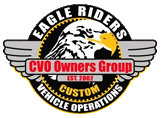Among the motorcycles is the oldest Harley: Serial Number One. It’s a pedal bike with a small engine, built by company founders William S. Harley and Arthur Davidson inside a 10-by-15-foot wooden shed that had the words „Harley-Davidson Motor Company "scrawled on the door. Also featured is Elvis Presley’s red and white 1956 Model KH, along with its January 1956 paperwork, which notes he bought it from a Memphis dealer, his payments were $50.15 a month and lists his occupation as a "vocalist-self-employed."
His reason for buying: "pleasure and business." Elvis bought it just a few months before his breakthrough single "Heartbreak Hotel" hit the top of the charts "It was like he knew he was on his way and he wasn’t going to Disneyland," Bortner said. "He was going to the dealership." Elvis was on the cover of Harley-Davidson’s magazine, The Enthusiast, in May 1956 – an artifact also at the museum.
Bill Halling, a 61-year-old family doctor from Des Moines, Iowa, got an early look – because he was a Harley owner for 15 years – at the museum and loved seeing all the bikes in one place, reading about the history and seeing the lighted wall of photos contributed by Harley riders. "I’m really enraptured with Harley-Davidson," he said. "Riding a Harley changed my life from boring to exciting." Museum Director Stacey Schiesl expects the museum, which is near downtown, to attract 350,000 people a year from around the world.
"It’s a place where motorcycle enthusiasts, Harley-Davidson enthusiasts, will feel immediately at home," Schiesl said. "But it’s also a place for people who are not yet part of Harley-Davidson really get a taste of the freedom and camaraderie and personal expression that our riders do feel every time they fire up a motorcycle."
The museum wouldn’t be complete without the bikes’ trademark "Potato, Potato, Potato" sound, which is featured in many of the displays. A video screen features classic Harley moments in television and movies. Harleys have appeared in classics such as "Easy Rider," and "Pulp Fiction" and there are animated versions in "The Simpsons" TV show and movie. This year, Harrison Ford and Shia LaBeouf rode one in "Indiana Jones and the Kingdom of the Crystal Skull." Ten motorcycles from throughout the years give museum goers a chance to feel a Harley beneath them. Called Harley’s version of a family tree, there’s a wall of V-Twin engines that shows its evolution from 1909 to now. It includes interactive screens where people can hear how each engine sounds.
There are also the three-wheeled Servi-cars – created during the Great Depression for commercial use to deliver ice, fish, milk – and some of the almost 90,000 WLA Harley motorcycles created for use during World War II. The military contract was a big reason the company survived the war and why many people learned to ride, Schiesl said.
The company had about 90 percent of the items in its archives – few have been seen by the public before – but had to go to private owners to buy some items, Schiesl said. Those included some of the hill climbing bikes, board track racing bikes and early police bikes.
The company also bought a number of customized bikes – like one by the late Felix Predko of Pennsylvania. The King Kong is a 13-foot-long cycle with two seats and two engines.
Schiesl said many of the construction workers who built the buildings were Harley fans, as is the museum restaurant’s chef, who was inspired to put a peach cobbler on the menu after a ride he took in Georgia during peach season. "There are a lot of people who are passionate about riding that have put this thing together," Schiesl said.
–––
On The Net:
http://www.harley-davidson.com Author
Topic: A little HD History (Read 1366 times)
Author
Topic: A little HD History (Read 1366 times)

